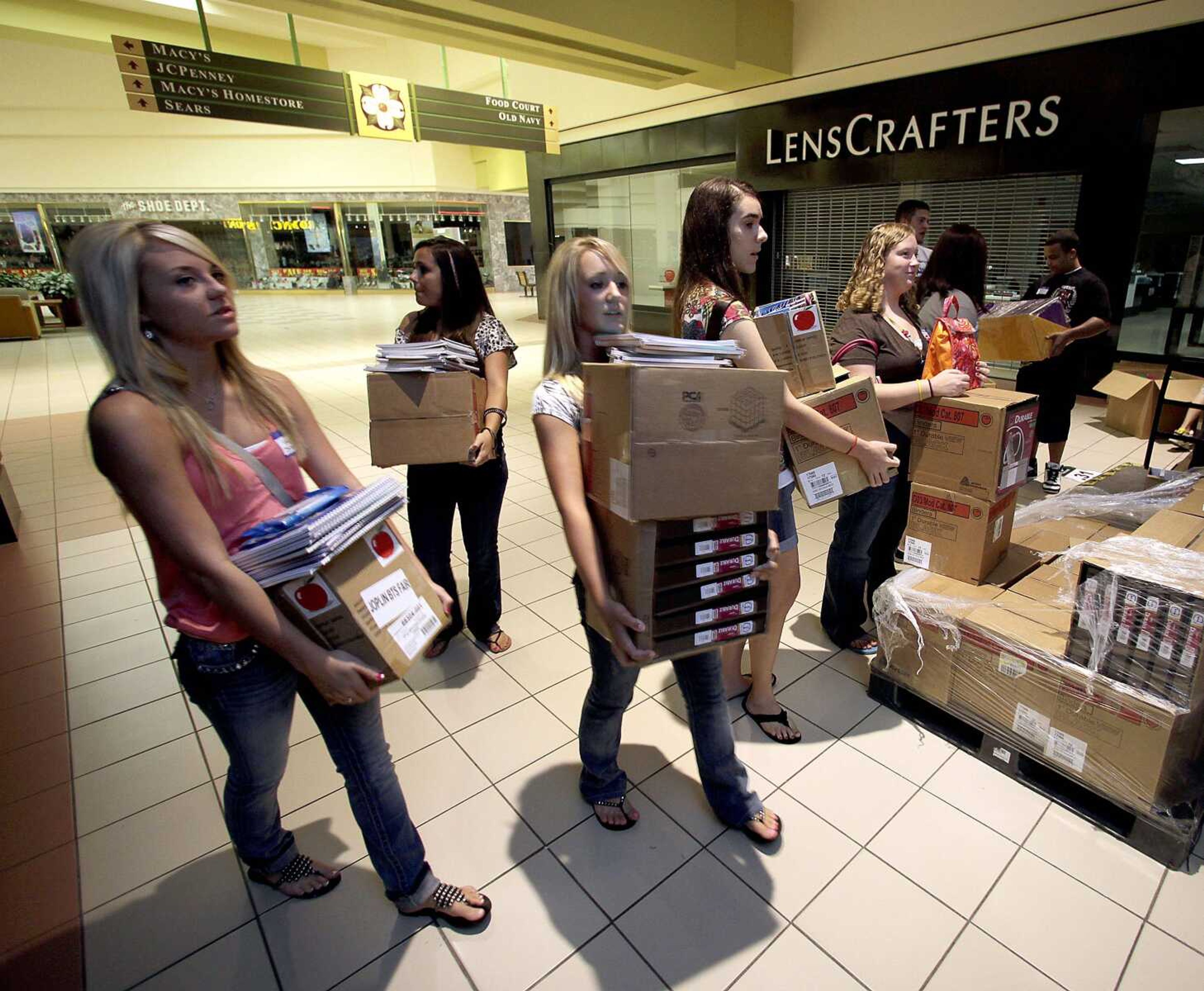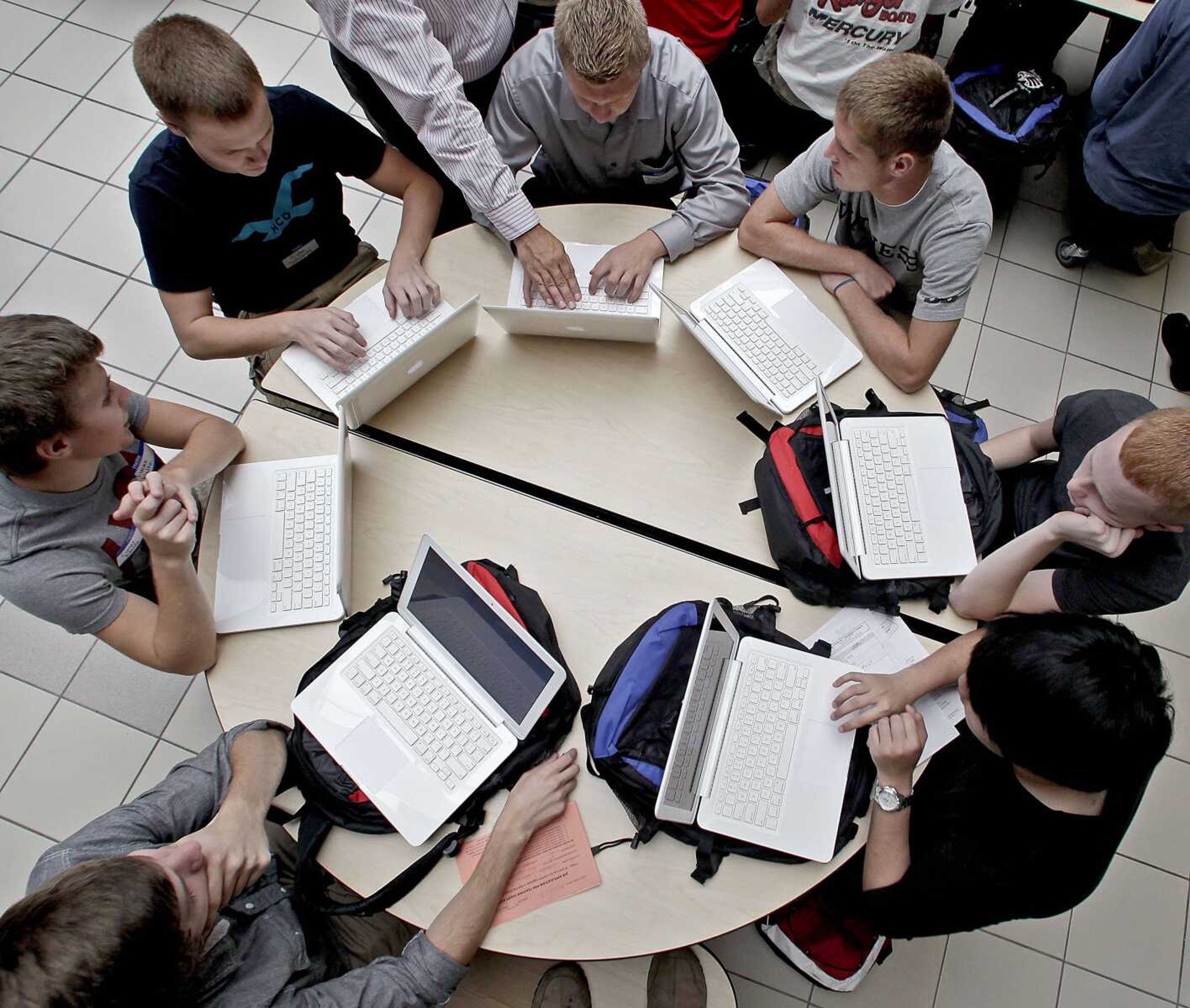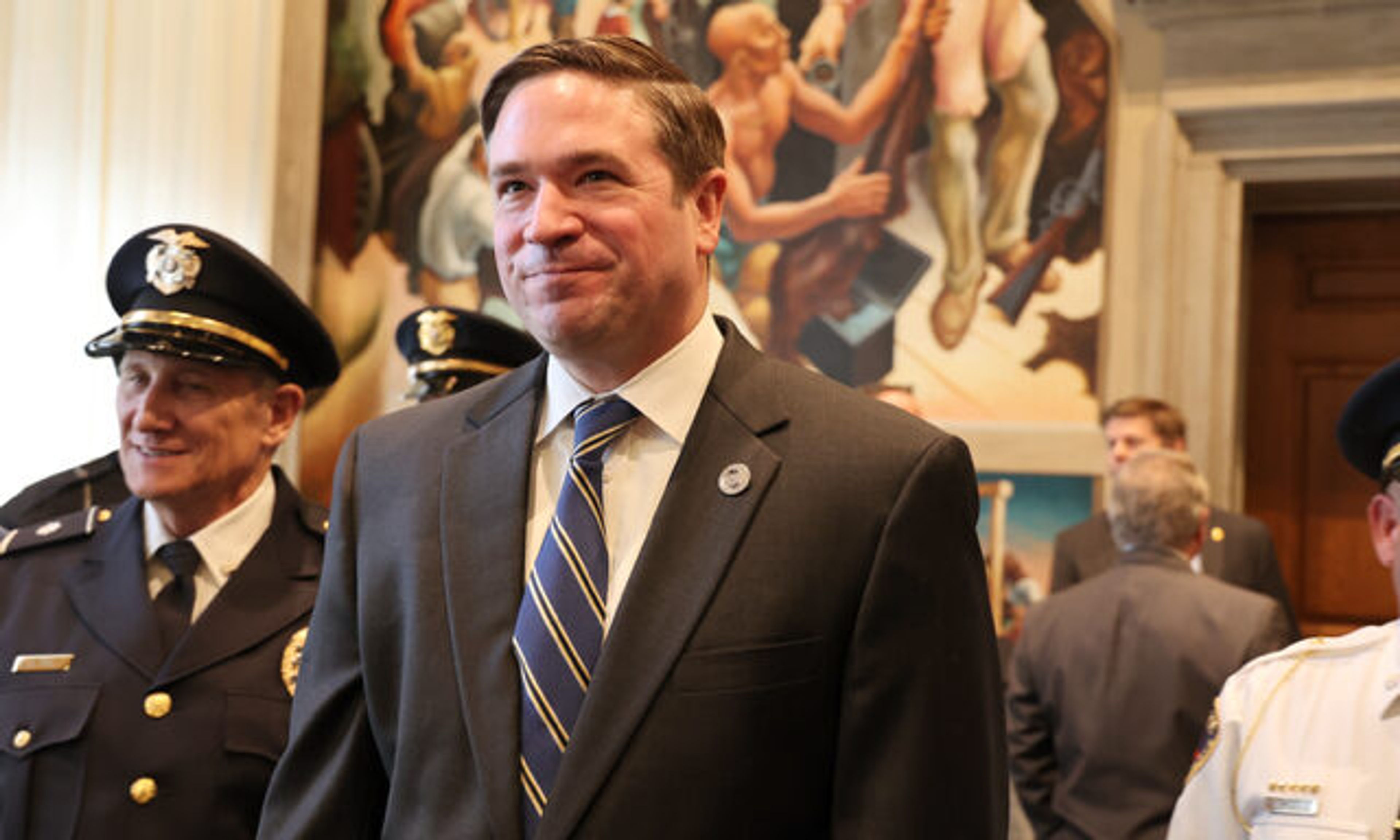Joplin goes back to school 3 months after twister
JOPLIN, Mo. -- Seniors and juniors are taking classes in a converted big-box store. Freshmen and sophomores are in a building across town. The new middle school is in an industrial park. Across Joplin, the schools are still a jumble, with books, computer monitors and unassembled furniture littering unfamiliar hallways. ...
JOPLIN, Mo. -- Seniors and juniors are taking classes in a converted big-box store. Freshmen and sophomores are in a building across town. The new middle school is in an industrial park.
Across Joplin, the schools are still a jumble, with books, computer monitors and unassembled furniture littering unfamiliar hallways. But as classes resumed Wednesday, students and teachers welcomed the start of another year as a return to something normal -- or what passes for normal in a city crippled last spring by the nation's single deadliest tornado in six decades.
"You can't pretend like nothing happened," said high school English teacher Brenda White. "But everything is so new here. Every single thing that is this school is new and different."
The twister killed 160 people, injured hundreds more and destroyed thousands of buildings, including Joplin's only public high school. Now after months of cleaning up debris, attending funerals and trying to rebuild shattered lives, it was time to get back to pop quizzes and homework assignments.
"It's going to take a while to build everything back, but books are a good start," White said while stocking her classrooms with copies of "The Great Gatsby," "The Kite Runner" and other literary standards past and present.
The school system was hit especially hard by the May 22 tornado. Seven students and one employee were among the victims, including a senior pulled from his car by winds on his way home from the Joplin High School graduation ceremony. Six school buildings were destroyed, including the high school. Seven other buildings were badly damaged.

District leaders quickly realized that they would play a huge role in Joplin's recovery, for reasons symbolic as much as practical. They expanded the hours and locations of summer school in an effort to give children a reassuring routine -- and their parents the time to deal with insurance agents, contractors and social service agencies.
They cobbled together a hodgepodge of temporary locations for fall classes, from the old Shopko store at Northpark Mall to a former Missouri Department of Transportation office where the superintendent and other administrators now work. Rival elementary schools combined, and a middle school found space in an industrial park.
Even in a corner of the country where hard work is cherished, the swiftness of the transformation was striking, White said.
"I've always known people are strong here. But this has really brought it home," she said. "People are so strong. They just get up, dust off and go to work."
Students arrived at the "mall school" Wednesday morning to a bevy of well-wishers holding Joplin High signs and lining the entrance road. Some teens gathered in modular classrooms, right next to a row of concrete-lined storm shelters. Others lingered in hallways.
They raved about the school's college feel. Drinks were available from Joplin Joe's coffee bar, and every student could get a free laptop thanks to a donation from the United Arab Emirates worth as much as $1 million.
Parents and other relatives were impressed.
"It just blows your mind," said Pamela Berry, who accompanied her 17-year-old nephew to a Tuesday night open house. "I want to come back to high school."
The start of classes also offered students a chance to reunite with classmates who had endured the same ordeal.
"Everyone is closer, more friendly to each other," said senior Yainer Oviedo, whose mother and six siblings lost their home to the storm. He now lives with a classmate and still wrestles with his own harrowing memories of huddling behind a flimsy mattress while the tornado roared overhead.
"Our whole community has been through a lot," he added. "You look at someone and automatically know what they're going through."
Gov. Jay Nixon, who toured the school Wednesday, encouraged students to take advantage of their new learning environment.
"I hope you use what has been given to you to lift the expectations of Joplin even higher," he said. "While there's been tremendous suffering, there are even greater expectations."
At East Middle School, which was relocated to a converted warehouse on the outskirts of town, students agreed that some things were unchanged: Cafeteria food still tasted terrible. Kids got lost on their way to class. And the odor of pet food from the factory across the street was gross.
School officials brought in additional counselors and trauma workers to help students and families who may still be struggling in the storm's aftermath.
"We can build buildings, but the emotional damage that this storm has caused is of a very significant concern and something we're going to be watching closely for months, if not years," superintendent C.J. Huff said.
Phillip Gloyer, a communication arts teacher who is also a National Guard chaplain, said he planned to tap his divinity school training as well as his expertise in British literature.
"I'm just really focused on the kids' emotional health," he said. "A lot of hugs, a lot of encouragement. Asking them to tell their story. That's the best therapy."
Connect with the Southeast Missourian Newsroom:
For corrections to this story or other insights for the editor, click here. To submit a letter to the editor, click here. To learn about the Southeast Missourian’s AI Policy, click here.









